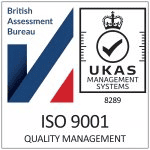

Following several high profile incidents and the recommendations of associated accident investigation reports, Network Rail has commissioned the design and production of a new stretcher bar system. The new system is designed to increase the integrity of points systems and to reduce the risk of stretcher bar failure and associated risk to rail traffic. This new stretcher bar design was due to be rolled out from late 2012 in a targeted.
The new stretcher bar system has been designed by Balfour Beatty Rail (BBR), in line with requirements specified by Network Rail. The system has been analysed by BBR via the Failure Modes and Effects Analysis (FMEA) methodology. Network Rail Reliability of Signalling Assets (RoSE) project has taken out an analysis of the new stretcher bar in line with RCM II requirements. This analysis considers the stretcher bar as part of the point system as a whole (i.e. integrated with point machines, supplementary drives and detection etc).
Network Rail has requested Vertex SE to carry out a high level verification and validation exercise on the processes carried out by Balfour Beatty and RoSE. The purpose of this analysis is to provide an independent validation that both Balfour Beatty and the RoSE project have carried out a proper and thorough analysis of the system, and to identify any gaps in methodology that may require further consideration before introduction of the new stretcher bar system.
Independent Safety Assessment of new rail products
Critical Analysis Technical Writing/ Report Provision
Project duration was from August 2012 till August 2013
Vertex utilised its team of Railway Systems and Safety Engineers and Project Managers for this project. Qualification held includes membership of the Institution of Railway Signalling Engineers, membership to the Association of Project Managers (MAMP), Project Management Professionals (PMP) and professional Chartership (C.Eng.).